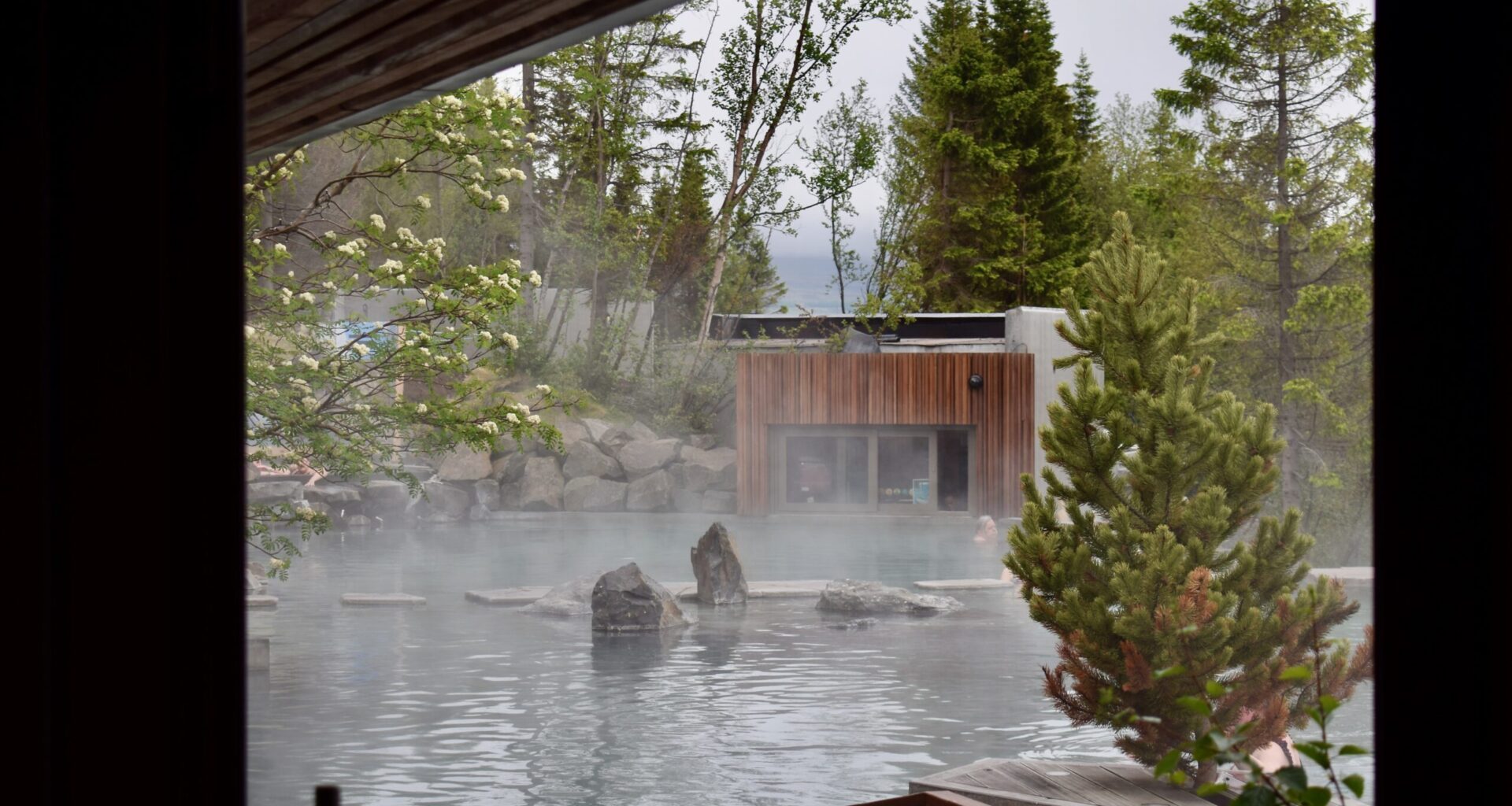Or: how I learned to stop worrying and love the spa
That floating around in hot water is good for you is a universally recognised truth. Wherever in the world there’s natural hot water, people hop in — from the peaceful sentō of Japan, to refreshing Turkish baths, to Iceland-style geothermal basking. Wherever in the world you swim, it’ll relax the body and mind, and rejuvenate the spirit — not least because it gets us away from our phones and screens, and reminds us we have a body to take care of, too.
As a chronic pain-haver, I’ve tried them all. Turkish baths (or hammam) are an inner-city pit stop, where you pull over for an hour to be steamed, scrubbed, and pummelled, stepping outside energised (if a little tender). Japanese sentō (spa-like, outdoor, natural) and onsen (small, indoor, urban) have a more peaceful vibe, with people soaking alone with eyes closed, or murmuring to each other quietly in pairs.
Iceland’s pool culture is different again. Municipal pools act almost like a town square, with packs of schoolkids running past 20-something friends locked in a trúnó, buff types doing businesslike laps, and gaggles of old folks holding forth about the issues of the day. As an útlendingur, you might be side-eyed curiously, asked for your life story, or — preferably, for a relative introvert like me — be left to drift away with your thoughts. Either way, it’s a super fun experience with some homely hustle and bustle, and a concentrated dose of íslensk stemning.
Lurch away
The new generation of sleek, luxurious spas that have mushroomed around Iceland are something else again. A product of opportunism — both in taking advantage of the tourist boom, and putting Iceland’s plentiful geothermal water to use — they offer a different, fancier kind of bathing. They have warm rainfall showers with the herbaceous scent of Sóley toiletries hanging in the air, coal-fired saunas with widescreen windows, and powerful shoulder-massaging torrents to work out muscle knots. They’re quieter, and pricier — more like going for a tasting menu than popping into your local diner.
“For a town of 2,000 people to suddenly have a luxury spa on their doorstep is surely a good thing.”
These spas are a lurch away from the down-to-earth nature of Iceland’s pool culture — but they aren’t enjoyed by tourists exclusively. At the lush, wooded Forest Lagoon in Akureyri, I heard more Icelandic voices than English, or Chinese, or German. By the same measure, GeoSea in Húsavík — with its saline water and undulating infinity edge looking out over the ever-changing weather of the Skjálfandi bay — seems as much of a hit with locals as visitors. For a town of 2,000 people to suddenly have a luxury spa on their doorstep is surely a good thing — and it’s not like the town pool is going anywhere.
No longer wild
The wave of new spas — and particularly those with a more rustic edge, like Flúðir’s Gamla Lauginn — also come after a period of increased interest in wild bathing. That is, the classic experience of following questionable directions to an obscure, barely-there parking spot, and hiking towards a promising plume of steam a kilometre or two away; testing the water with a toe, hanging your clothes on a tree branch, and just hopping in.
Natural hot pots have a very special kind of charm, but the vast increase in tourist traffic over the last decade has kinda killed the vibe. The last thing you wanna see when you get to a prospective hot pot is a row of five gleaming rental cars. And that’s not to mention other, muckier consequences — anyone remember the infamous Poop News column that ran regularly in Grapevine throughout 2015?
Given that context, many landowners have fenced off natural hot pots completely. In this respect, spas are giving people the nature-adjacent geothermal bathing experience people want. At a price, for sure — but also with the infrastructure this new scale demands.
Mist ourselves
I get a bit of healthy scepticism, especially when formerly cheap things start making someone rich. But reflexively lamenting cultural shifts isn’t always useful. We’ve all heard old folks talking about how life was better 10 or 20 or 50 years ago — and it always has a dash of rose-tinted revisionism.
I’ve often pondered that the midlife drift towards cultural conservatism we observe from generation to generation is an expression of creeping existential fear. Many small changes add up over time, becoming a sense of eerie unfamiliarity; this in turn points towards the idea of the world moving on, and one day continuing without us. Any change becomes a sign of time’s passing, to be resisted, disapproved of, and subconsciously feared.
But nostalgia can’t stop the clock from ticking, and learning to embrace the new with an open mind is healthy. At least here in Iceland we can go and mist ourselves with some birch oil, soak in some salty water, and drink some guava juice while we worry about it.
In this same issue, we published contributor Freyr Thorvaldsson’s article titled “A Tale Of Two Pools,” which also explores the (few) similarities and (major) differences between Icelandic municipal pools and lagoons.
